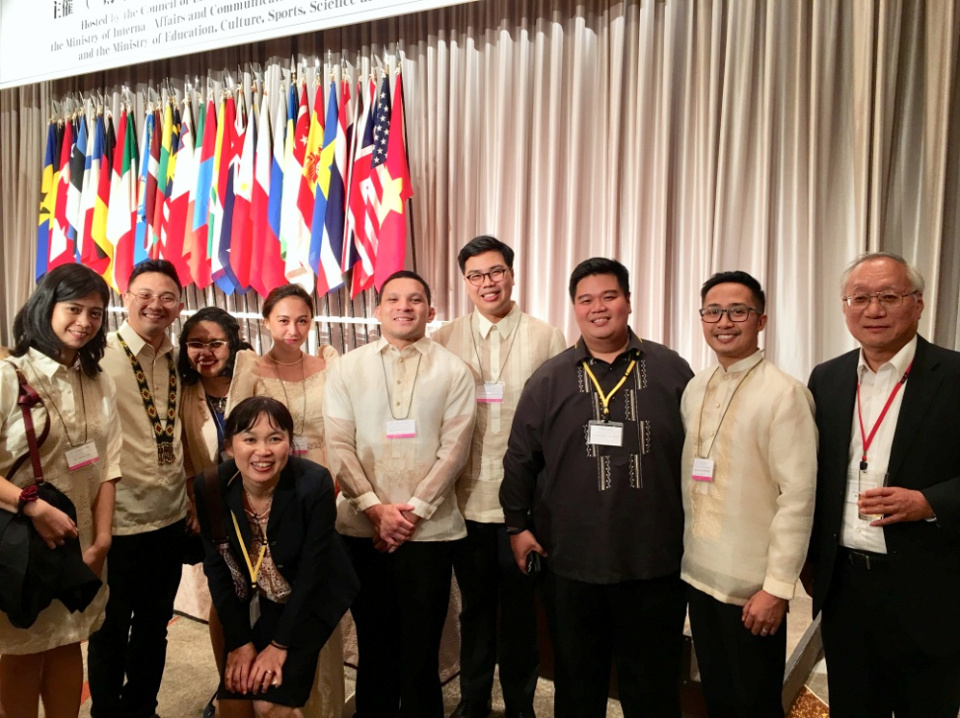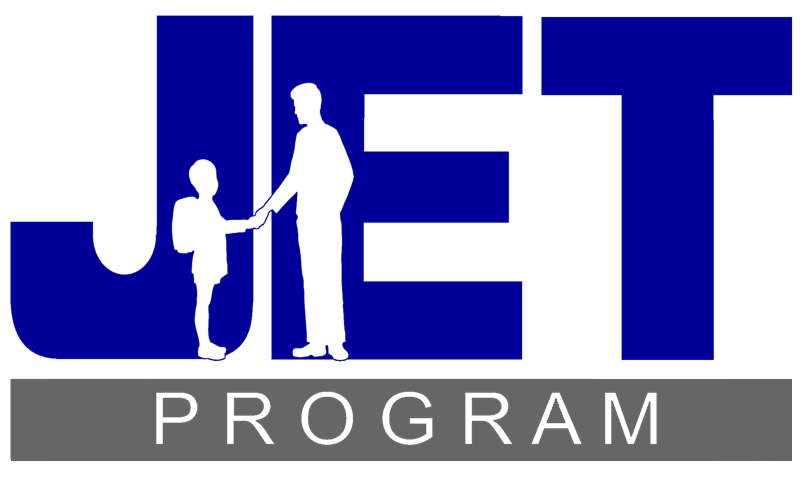What is JET Program in Japan: Bridging Cultures and Education
What is JET Program in Japan? Discover its origins, objectives, and how it shapes the lives of participants. Learn about eligibility, roles, and the impact of this program, bridging cultures and offering valuable opportunities for personal growth and international understanding.
Intro
The JET Program in Japan, short for the Japan Exchange and Teaching Program, stands as a remarkable testament to the power of international cultural exchange. Established with the vision of fostering global understanding and cooperation, this program has evolved over the years to become a symbol of cross-cultural engagement.
In this exploration, we delve into the heart of the JET Program, unraveling its history, objectives, and the profound impact it has on both the participants and the communities it touches. From eligibility criteria to the roles and responsibilities of those involved, we embark on a journey to comprehend how the JET Program effectively bridges cultures and creates boundless opportunities for all involved.
What is JET Program in Japan?
The JET Program, or Japan Exchange and Teaching Program, is a renowned initiative that brings individuals from around the world to Japan to participate in cultural exchange and English language education. Established in 1987 by the Japanese government, the program’s primary objective is to enhance international understanding and strengthen ties between Japan and other nations.
The JET Program offers diverse opportunities for participants, who are typically referred to as “JETs.” These participants, hailing from various countries, include recent university graduates, experienced professionals, and individuals passionate about cultural exchange. JETs are placed in Japanese schools, government offices, and local communities throughout Japan, where they serve as Assistant Language Teachers (ALTs) or Coordinators for International Relations (CIRs).

Participants to JET Program (Source: Google)
As ALTs, JETs assist Japanese educators in teaching English, contributing to language education and cultural enrichment. CIRs, on the other hand, engage in internationalization activities, supporting local governments in their international relations efforts.
The JET Program not only facilitates language learning but also promotes intercultural awareness and fosters lifelong friendships. It offers JETs a chance to immerse themselves in Japanese culture, develop a deep appreciation for the country, and gain valuable international experience. With its rich history and enduring impact, the JET Program stands as a beacon of cultural exchange and mutual understanding on the global stage.
Eligibility and Application Process
Eligibility Criteria
The JET Program in Japan welcomes participants from various backgrounds, but there are specific eligibility requirements that applicants must meet. While these criteria may evolve over time, the following are common eligibility requirements:
- Nationality: Individuals who hold citizenship in any of the 54 participating countries meet the eligibility criteria, whereas permanent residents who do not possess citizenship are not eligible.
- Education: A bachelor’s degree from an accredited institution is a common requirement. In some cases, master’s degrees or equivalent qualifications may be preferred or required for certain positions.
- Language Proficiency: Proficiency in English is essential for most positions, as JETs primarily work as English language teachers. Knowledge of Japanese is beneficial but not always mandatory.
- Health: Applicants should be in good physical and mental health to endure the demands of living and working in a foreign country.
- *** The JET Program has no specific age limit for applicants. However, most program participants are often young people, often recent university graduates or with little work experience.
You can read all the eligibility criteria on their website and find more information on Reddit.
Application Process
The application process for the JET Program typically involves several stages:
- Application Submission: Applicants complete an application form provided by the Japanese embassy or consulate in their home country. This form includes personal information, educational background, work experience, and a statement of purpose.
- Interview: Shortlisted candidates are invited for an interview, which may be conducted in person or via video conference. The interview panel evaluates the applicant’s communication skills, enthusiasm for cultural exchange, and suitability for the program.
- Placement Preferences: Applicants may have the opportunity to indicate their preferences for placement locations (e.g., urban or rural areas). However, final placements are determined by the JET Program coordinators.
- Notification: Successful candidates receive formal acceptance notifications from the program authorities.
- Pre-Departure Orientation: Before departing for Japan, JET participants attend pre-departure orientations organized by their home country’s JET Program office.
- Arrival in Japan: Once in Japan, JET participants receive further training and orientation to prepare them for their roles in Japanese schools or communities.
The JET Program’s application process is highly competitive, and applicants should carefully review the specific requirements and deadlines provided by their respective JET Program offices in their home countries.
You may also like:
- Freelancing in Japan – How to Work for Yourself in Japan
- How To Get Working Visa In Japan – A Comprehensive Guide
- Best Zojirushi Rice Cooker Black Friday Deals in 2023 – Super Sale
Roles and Responsibilities
The JET Program in Japan encompasses a range of roles and responsibilities, with participants contributing to cultural exchange and English language education. Here are the primary roles and associated responsibilities within the program:

Assistant Language Teacher (Source: Google)
1. Assistant Language Teacher (ALT):
- Teaching: ALTs collaborate with Japanese teachers to plan and conduct English language lessons.
- Language Support: They provide pronunciation and conversation practice, fostering language proficiency among students.
- Cultural Exchange: ALTs share their culture and customs with students and staff.
2. Coordinator for International Relations (CIR):
- Internationalization Activities: CIRs assist local governments and organizations in promoting international relations and cultural exchange.
- Translation/Interpretation: They may translate documents, interpret at meetings, and facilitate communication between Japanese and foreign parties.
- Community Engagement: CIRs often engage in community projects and events to encourage global awareness.
3. Sports Exchange Advisor (SEA):
- Sports Promotion: SEAs promote sports and physical education in Japanese schools, fostering an understanding of international sports culture.
- Organizing Events: They organize sports events and activities, including coaching and training sessions.
4. Coordinator for International Relations (CIR – Sports):
- Sports and Cultural Exchange: CIR-Sports combine language and sports expertise to enhance international exchange through sports-related activities.
- Promotion: They promote sports programs and cultural understanding within their communities.
5. Senior Coordinator for International Relations (Senior CIR):
- Supervision: Senior CIRs may provide guidance and support to junior CIRs and assist in program coordination.
- Advanced Responsibilities: They often handle more complex internationalization tasks.
6. Prefectural Advisors (PA):
- Mentorship: PAs offer support and guidance to JET participants in their assigned prefectures.
- Assistance: They assist with administrative matters, cultural adjustment, and problem-solving.
7. Municipal Advisors (MA):
- Local Support: MAs serve as local resources, aiding JETs with community integration and administrative matters.
- Cultural Exchange: They help JETs connect with their local communities.
8. Other Roles:
In some cases, JET participants may have specialized roles related to specific projects or initiatives, such as promoting regional tourism or environmental conservation.
Living and Working in Japan
Joining the JET Program in Japan is not just a professional opportunity; it’s a life-changing experience that immerses participants in the rich tapestry of Japanese culture while fulfilling essential roles in education and international exchange. Here’s a glimpse into the dynamic aspects of living and working as a JET Program participant:

Shibuya – Japan (Source: Google)
Cultural Adaptation:
- Language: While proficiency in Japanese is not always mandatory, learning the language is highly encouraged for effective communication and cultural integration.
- Etiquette: Understanding Japanese customs, bowing, gift-giving, and other social norms is crucial to fostering positive relationships.
Community Engagement:
- Local Integration: JETs become integral members of their communities by attending festivals, local events, and engaging in cultural activities.
- Teaching and Cultural Exchange: JETs collaborate with Japanese educators to create engaging lessons and promote intercultural understanding.
Accommodation:
- Housing: JET participants typically receive furnished accommodation, though the specifics vary by placement. It can range from apartments to shared housing or teacher residences.
Support Systems:
- Orientation: JETs attend pre-departure orientations in their home countries and receive in-depth orientations upon arrival in Japan to prepare them for their roles and life in Japan.
- Prefectural/Municipal Advisors: These mentors offer guidance and assistance with various aspects of life in Japan, from administrative matters to cultural adaptation.
Work Environment:
- School Placement: JETs work in elementary, junior high, or high schools, assisting Japanese teachers in English language education.
- Teaching Schedule: The work schedule generally follows the Japanese school year, including vacations and holidays.
Cultural Experiences:
- Travel Opportunities: JETs have the chance to explore Japan’s diverse regions, landmarks, and attractions during their free time.
- Food and Cuisine: Enjoying Japanese cuisine and experiencing local delicacies is an integral part of cultural immersion.
Personal Growth:
- Language Proficiency: Many JETs improve their language skills during their tenure, which can be a valuable asset for future endeavors.
- Global Perspective: Living and working in Japan broadens participants’ horizons, fostering a global perspective and lasting friendships.
Challenges:
- Homesickness: Adapting to a new culture and being far from home can be emotionally challenging for some participants.
- Workload: Balancing teaching responsibilities, cultural engagement, and personal time can be demanding.
Post-JET Opportunities:
- Career Pathways: JET alumni often find their experiences in Japan open doors to various career opportunities, whether in education, international relations, or other fields.
- Networking: The JET Program alumni network provides ongoing support and networking opportunities.
Living and working in Japan as a JET Program participant is an adventure filled with personal and professional growth. It’s an opportunity to make a positive impact on the lives of Japanese students and communities while building lasting connections and memories in the Land of the Rising Sun.
FAQs
1) Is it difficult to join the JET Program?
The JET Program can be competitive due to its popularity and the limited number of positions available. The application process typically involves rigorous screening, including written applications, interviews, and sometimes language proficiency tests. Success depends on factors such as qualifications, relevant experience, and the specific requirements of the host country’s JET Program office.
While it may be challenging to secure a place in the program, applicants with a strong commitment to cultural exchange, teaching, and a genuine interest in Japan tend to have a competitive edge.
2) What is the wage scale for the JET Program?
The salary for participants in the JET Program in Japan can vary depending on several factors, including the position, location, and the specific contract with the contracting organization (usually a local government or school board).
ALTs usually receive a monthly salary ranging from approximately 280,000 to 320,000 Japanese Yen (JPY). CIRs may receive a slightly higher salary, often in the range of 280,000 to 360,000 JPY per month.
3) Does the JET Program cover lodging and travel expenses?
The program typically covers the cost of a one-way flight to Japan at the start of the contract and a return flight at the end of the contract. While the program doesn’t directly provide housing, it often offers assistance in securing accommodation. Participants may receive subsidized housing or housing allowances to help with rent expenses.
4) Where are JET Program teachers assigned in Japan?
Teachers in the JET Program in Japan are typically placed in a variety of educational institutions, including elementary schools, junior high schools, and high schools. Additionally, some participants may work for local boards of education or government offices. The specific placement location is determined by the JET Program coordinators and can be in urban or rural areas throughout Japan.
5) What is the term of JET program contracts?
JET Program contracts in Japan are typically for one year. However, they can be extended for up to five years upon successful reappointment, depending on the preferences of the participant and the needs of the contracting organization. Participants may also choose to leave the program after their initial contract term.
6) Is JET a better option than a typical teaching position in Japan?
Whether the JET program is better than a regular teaching job in Japan depends on individual preferences and career goals. JET offers cultural exchange opportunities, support, and diverse roles. Regular teaching jobs may offer higher salaries but fewer cultural experiences. It’s essential to consider personal and professional priorities when making this decision.
Conclusion
So, “What is JET Program in Japan?”. This is a unique and enriching opportunity for individuals seeking cultural immersion, international experience, and the chance to contribute to education and global understanding. While it may not offer the highest salary, its benefits extend far beyond monetary compensation.
ET fosters personal growth, lifelong friendships, and a deep appreciation for Japan’s culture and people. For those passionate about cultural exchange, language education, and forging global connections, the JET Program stands as a remarkable pathway to an unforgettable and transformative experience.










